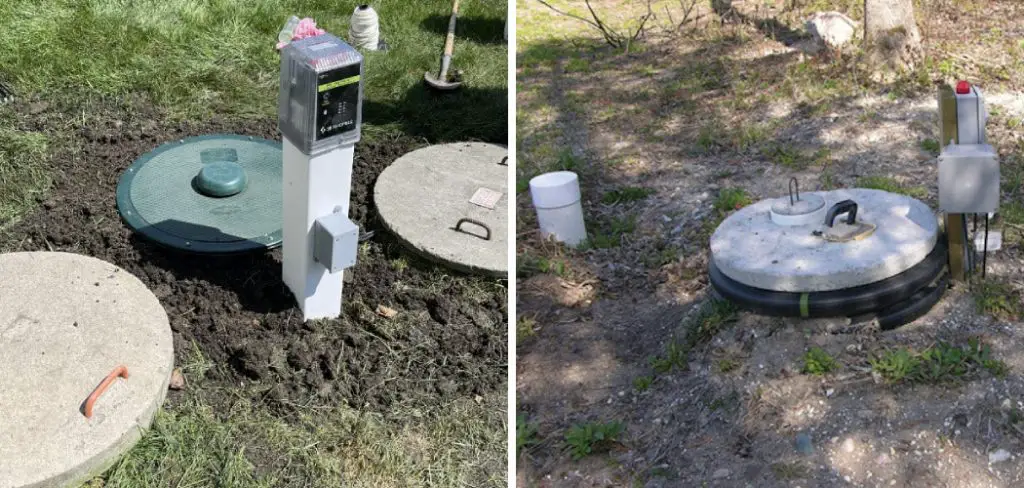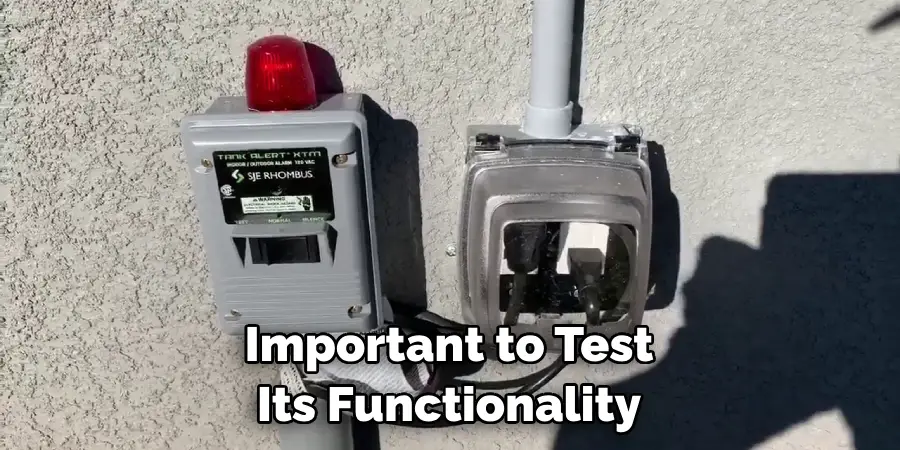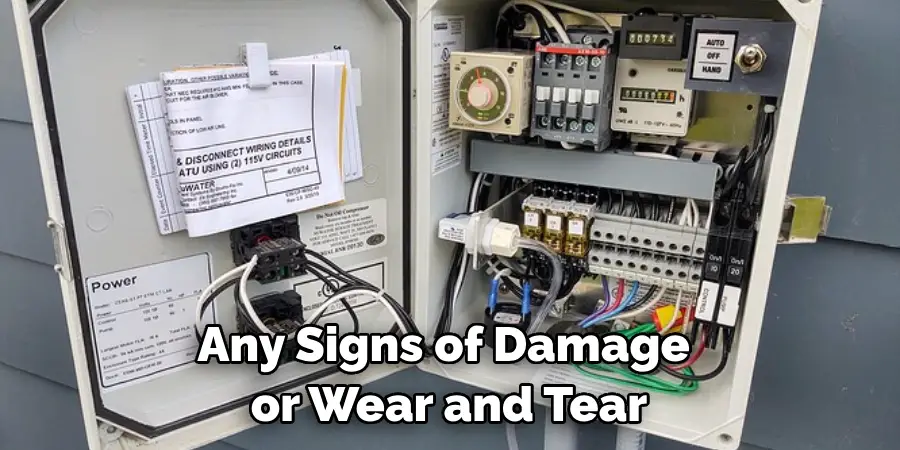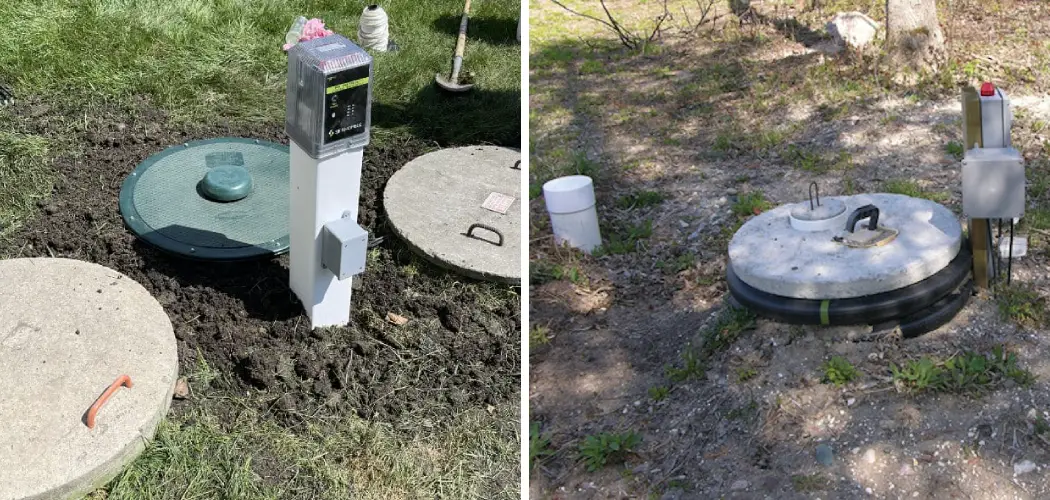There’s nothing quite like the sudden alarm of your septic tank warning you that it’s full. Whether you woke up in the middle of the night to the blaring alarm or stumbled across it while doing yard work, it’s a situation that should be addressed right away.

Not only does it mean that your septic system is nearing its limit, but if left unchecked, it could lead to a larger, more expensive problem. In this post, we’ll provide a simple guide on how to reset septic tank alarm and keep your system running smoothly.
Can You Reset the Septic Tank Alarm?
For those who rely on a septic system, the thought of a septic tank alarm going off can be stressful. But what exactly is a septic tank alarm, and is it possible to reset it? In short, a septic tank alarm is a warning system that alerts homeowners when their septic system is experiencing issues.
This can range from a full tank to a malfunctioning pump. Thankfully, it is possible to reset a septic tank alarm. However, it’s important to note that simply resetting the alarm won’t fix the issue at hand. Instead, it’s essential to address the root cause of the alarm and fix any underlying problems with the septic system.
Why Should You Reset Septic Tank Alarm?
Septic tanks can be a vital component of a functional home but can be easily overlooked. Many homeowners assume that once a septic tank is installed, it will continue to function as intended without issue. However, one important aspect of septic tank maintenance is resetting the alarm. When the alarm goes off, it indicates that there may be a problem with the system, such as a high water level or blockage.
You can identify and address the issue by resetting the alarm before it becomes a larger, more expensive problem. Regularly resetting the septic tank alarm can help prevent costly repairs and ensure your home’s system operates optimally. It’s a small effort that can reap big rewards in the long run.
How to Reset Septic Tank Alarm: A Simple Guide
1. Locate the Alarm
The first step to resetting a septic tank alarm is to locate it. The alarm is usually located on the side of the house, near the septic tank. It may be mounted on a post or attached to a wall. Once you have located the alarm, you can proceed to the next step.

2. Turn off Power
The second step is to turn off the power to the alarm system. This will prevent any further alarms from going off and will also allow you to work on resetting the alarm safely without risking an electrical shock. To turn off the power, simply locate your circuit breaker box and switch off the breaker that corresponds with your septic system.
3. Check for Problems
Once power has been shut off, it’s time to check for any problems that may be causing your alarm to go off in the first place. Look for any visible damage or leaks in your pipes or tanks, as these could be causing an issue with your septic system and triggering false alarms. If everything looks okay, move on to step four.
4. Reset Alarm
Now it’s time to actually reset your septic tank alarm! First, locate the reset button on your alarm panel (it should be clearly labeled). Then press and hold down this button until you hear a loud click indicating that it has been reset successfully.
5. Restore Power
Once you have successfully reset your septic tank alarm, it’s time to restore power to it by switching back on the breaker in your circuit breaker box that corresponds with your septic system. Make sure all other breakers are switched off before restoring power so that no other appliances or systems are affected by this change in electricity supply!
6. Test System
After restoring power back to your septic system, it’s important to test its functionality by running water through it for a few minutes and then checking if any alarms go off during this process (they shouldn’t!). If no alarms sound during this test period, you can assume everything is working correctly and move on to step seven!

7. Monitor System Regularly
Finally, make sure that you monitor your septic system regularly to ensure that everything is functioning properly and no new issues arise with its operation over time!
Check for signs of clogging or leakage around pipes/tanks every few months, as well as note if there are any changes in water pressure when using appliances such as washing machines or dishwashers connected to this system – these could indicate potential issues that need addressing before they become more serious problems down the line!
5 Considerations Things When You Need to Reset Septic Tank Alarm
1. Check the Alarm Wiring
When resetting a septic tank alarm, the first step is to check the wiring. Make sure that all of the wires are properly connected and that none of them have become loose or disconnected. If any wires appear damaged, it is best to replace them before attempting to reset the alarm. Additionally, it is important to ensure that all connections are clean and free from dirt or debris.
2. Inspect the Septic Tank
Before attempting to reset a septic tank alarm, it is also important to inspect the tank itself for any signs of damage or wear and tear. This includes checking for cracks in the walls or bottom of the tank and looking for any leaks around fittings or pipes. If any issues are found, they should be addressed before attempting to reset the alarm.

3. Test All Components
Once all wiring has been checked and inspected, it is time to test all septic system components. This includes testing pumps, valves, float switches, and other components that may be part of your system. If any components are not functioning properly, they should be replaced before attempting to reset the alarm.
4. Disconnect Power Supply
To safely reset a septic tank alarm, it is necessary to disconnect power from both sides of the system – both incoming power from your home’s electrical panel as well as outgoing power from your septic system’s control box. Once this has been done, you can then reset the alarm without fear of electric shock or damage to your equipment.
5. Reset Alarm
Once all components have been tested and power has been disconnected from both sides of your system, you can now safely reset your septic tank alarm by pressing and holding down its “reset” button for several seconds until you hear an audible click indicating that it has been successfully reset. After this has been done, you can then reconnect power and turn on your septic system again for it to function normally once more
5 Benefits of Reset Septic Tank Alarm
1. Improved System Functionality
Resetting the septic tank alarm can improve system functionality by ensuring the system works as it should. The alarm is designed to alert homeowners when there is an issue with their septic tank, such as a blockage or malfunctioning parts. Resetting the alarm can help identify any issues early on, which can help prevent major damage and costly repairs in the future.
2. Reduced Risk of Overflow
Another benefit of resetting the septic tank alarm is reducing the risk of overflow. If the alarm is not functioning properly, it may not alert you when your tank is full, resulting in an overflow. An overflowing septic tank can cause serious damage to your property and contaminate nearby bodies of water, so it’s important to ensure that your alarm is functioning properly at all times.

3. Reduced Risk of Pollution
Resetting the septic tank alarm can also reduce the risk of pollution from leaking tanks or pipes. Suppose your septic system isn’t working correctly. In that case, hazardous materials may be able to leak out into nearby bodies of water or soil, creating a health hazard for humans and animals alike. Resetting your septic tank alarm will help to ensure that any potential problems are identified early on and addressed before they become major issues.
4. Cost Savings
Resetting your septic tank alarm can also lead to cost savings over time. By identifying any issues with your system early on, you can avoid costly repairs and keep your system running smoothly for years to come. Additionally, if you do need repairs in the future, resetting your alarm now may help you qualify for discounts on labor or materials costs from certain repair companies.
5. Increased Peace of Mind
Finally, resetting the septic tank alarm can provide homeowners with increased peace of mind, knowing that their system is functioning properly and that they won’t have any surprises down the line due to malfunctioning parts or blocked pipes. This peace of mind will allow you to focus on other aspects of home ownership without worrying about potential plumbing disasters!
Conclusion
Resetting your septic tank alarm is a relatively simple task, but it should not be ignored. Catching a full septic tank before it turns into a larger, costlier issue can save you time and money. Remember that regular maintenance and regular pump outs are the best ways to prevent septic system problems from arising.
If you’re unsure of how to perform regular maintenance on your system, reach out to a professional for guidance. With a little bit of attention and care, your septic system can continue to function properly for years to come. Thanks for reading our post about how to reset septic tank alarm.

